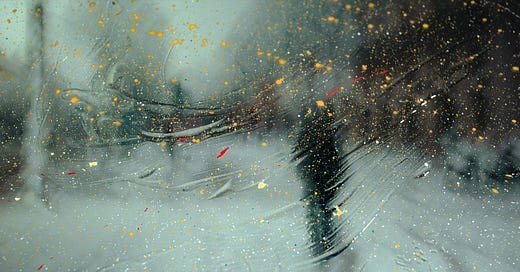I want the word death. I want the word God. I also want peonies and the color blue. The words are growing in the field ... like flowers, and I pick the ones I like. ~Mary Ruefle
The Art of Erasure: Why & How You Should Try It!
With Visceral Self intensive for embodied writing on the near horizon (yay!) I’m joyfully immersed in shaping that curriculum for you, and am therefore returning today to creative practice we explored a year ago—the art of erasure.
Of course we’ve talked before about the act of defining by negating, the process of understanding what something is by staring deeply into what it is not. Perhaps, in a certain way, the art of erasure falls under this umbrella, in the sense that it involves discovering something meaningful in a piece of text by carving most of it away.
And maybe you have already heard of or even played around with erasure, which is also called erasure poetry, or blackout poetry.
No matter what we call it, what we do when we practice erasure is take a text — and the text can be anything from an existing story or essay to a newspaper article to an Ikea furniture assembly guide to a Shakespeare play—and erase (or black out or cross out) words (usually most of the words), until some hidden meaning emerges from what remains.
I love love love this notion of a hidden meaning emerging from what remains. It’s so beautiful. It’s the essence, I think, of what creative process can be.
Sometimes, and very notably in the height of the Trump and #MeToo era, erasure poets erased specific texts as a purposeful act of subversion and resistance. For example, you can read Isabel O’Hare’s brilliant erasures of so-called #MeToo apologies here.
But there’s another way to erase—a dreamier, less purposeful way. A method driven less by a conscious destination and more by the subconscious dreamscape. This soft-gaze version of erasure can lead us into the shadowy recesses of memory and imagination, and even into the fascia of human consciousness that binds you to me and both of us to the whole.
I have practiced and taught this organic style of erasure during in-person retreats, and it’s a strangely beautiful thing to join together this way in gentle pursuit of the great unknown, the circumstantial chiming together of words to create a sensation wholly unplanned and yet entirely necessary.
This “soft gaze” version of erasure draws me for the way it can reveal the unknown that lies within us by carving it from the words of another. By isolating our clearest voice, in essence, from the voice of the world.
I’m inspired by—and will here in this today’s writing exercise outline step-by-step for you to try—the kind of erasure practiced and illuminated by one of the most acclaimed living poets of our time, who says she does not even






